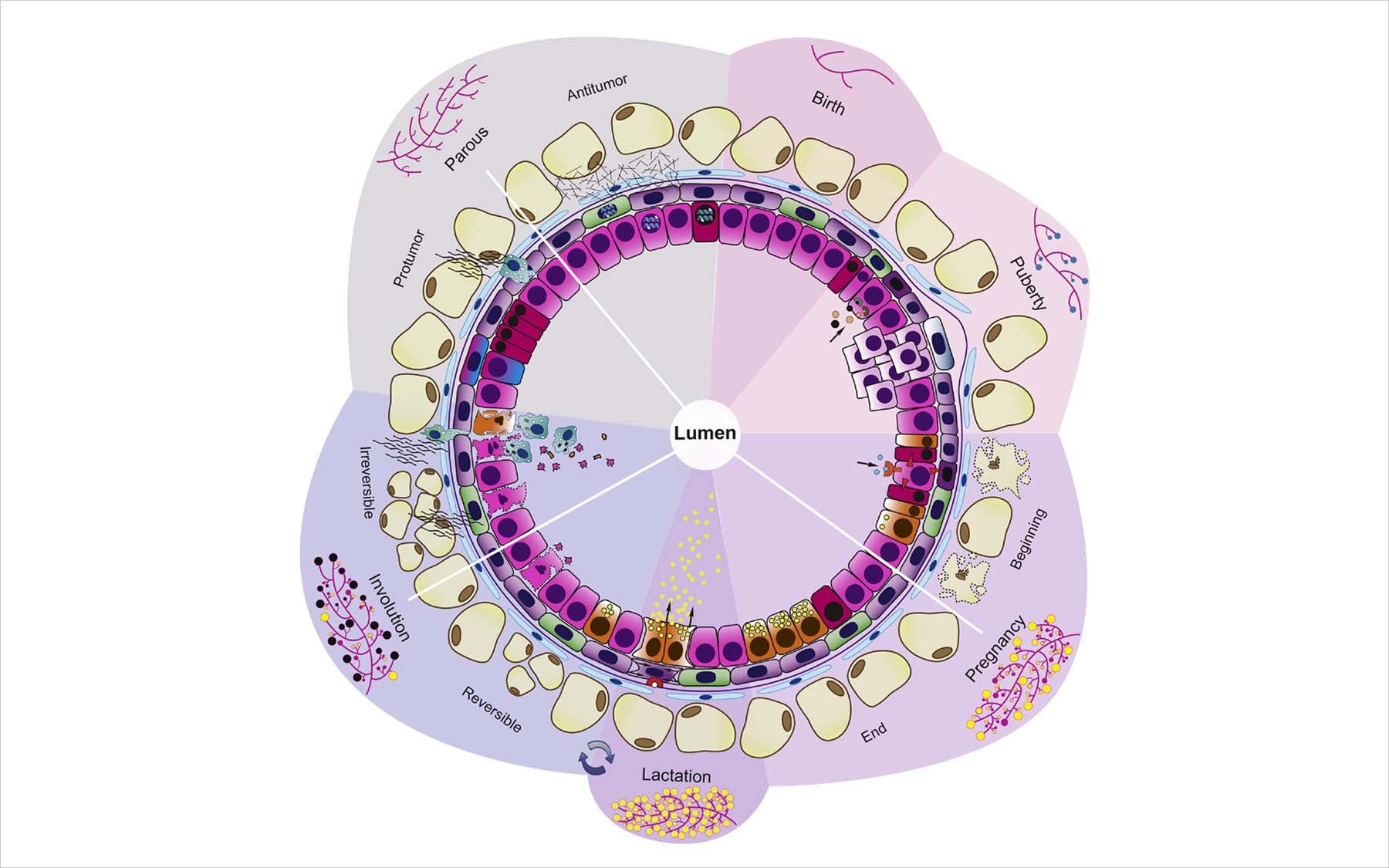Cold Spring Harbor Laboratory (CSHL) assistant professor Camila dos Santos extensively studies the effects of pregnancy on breast cancer risk. Her lab’s main focus is to understand why women who are pregnant at a younger age (early 20s) have a decreased risk of developing breast cancer.
Now, she and colleagues at CSHL have published a review in the journal Trends in Molecular Medicine that looks at all the research into the relationship. “Our idea was to have an overview of how the field has been studying pregnancy and breast cancer,” said dos Santos. She hopes for this review to inform and encourage scientists to “pursue the enigma around the effects of pregnancy that drive, or block, breast cancer development” in women and possibly men.
Her studies have found how one pregnancy cycle results in decreased level of DNA methylation. That decrease at specific genomic regions can temporarily influence what parts of the genome are expressed, which dictates how well breast epithelial cells, the cells that line the surface of the body, will function in a consecutive pregnancy.
In recent studies, dos Santos’ group used mouse models to follow the progression of breast tissue from a normal state into a premalignant state. It found that post-pregnancy breast tissue can resist the molecular changes that cause cancer in cells.
In an ongoing collaboration with breast surgeons from Northwell Health System, dos Santos has collected donated normal breast specimens for single-cell epigenomics and organoid analysis. The goal is to draw comparisons between humans and mice that will suggest new concepts regarding how pregnancy influences normal breast tissue development and the risk of breast cancer.
Read the whole review in the latest issue of Trends in Molecular Medicine.
Written by: Charlotte Hu, Content Developer/Communicator | publicaffairs@cshl.edu | 516-367-8455
